The new Socket SP5 for the new AMD EPYC Genoa is big, and it is also much different from what we have seen before. While we cannot show you the chips nor the socket at this point, but we purchased several coolers in anticipation of the upcoming platform reviews. So we figured we would show our readers what to expect from next-generation hunks of metal with fans attached.
Dynatron J12 for 320W SP5 AMD EPYC Genoa is Big
The Dynatron J12 is a 3U cooler and is rated for up to 320W. Pictures alone do not give a great sense of scale, and we cannot show you Genoa chips at this point. Still, here is a quick line-up of a desktop CPU (Intel Core i5-13600K), a 4th Gen Intel Xeon Scalable “Sapphire Rapids” server CPU launching in 2023, and a current generation AMD EPYC 7773X “Milan-X” part next to the new cooler:
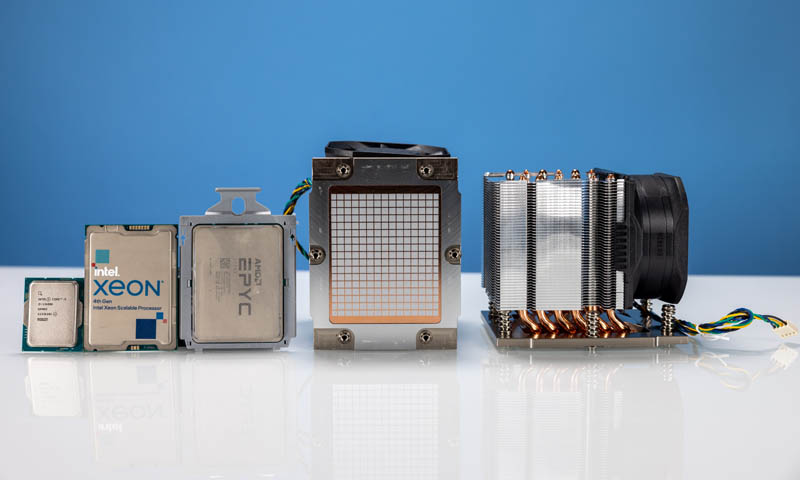
The Dynatron J12 has a mostly copper contact area with pre-applied Shin-Etsu 7762 thermal paste. If the fan in the above photo looks a bit off, more on that in a bit. We can see the SP5 socket will be a notable change for AMD. The J12 (and other Genoa coolers we have, like the J10 and L32), have six screw-down points to apply more even pressure to the CPU.
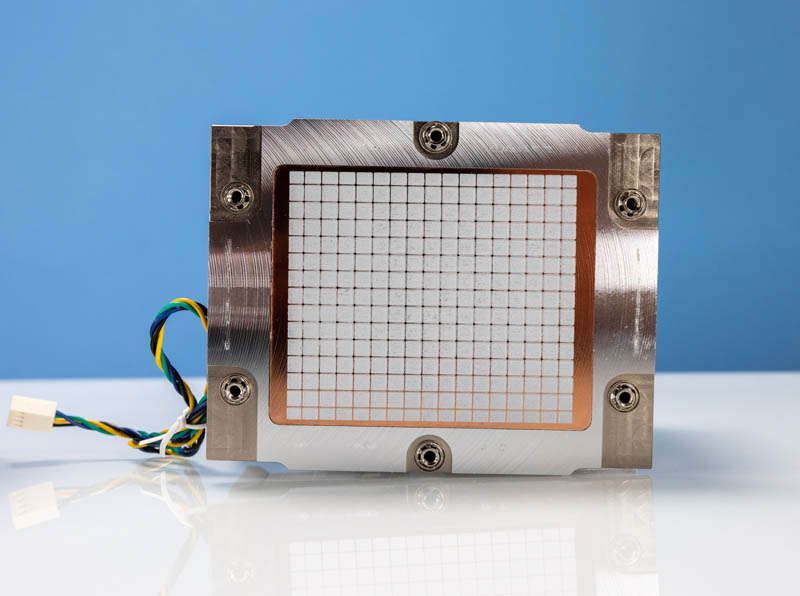
We have seen Socket SP5 in action at the Microsoft Shows AMD Genoa 1P Server Powered by Hydra Demo at OCP Summit 2022.
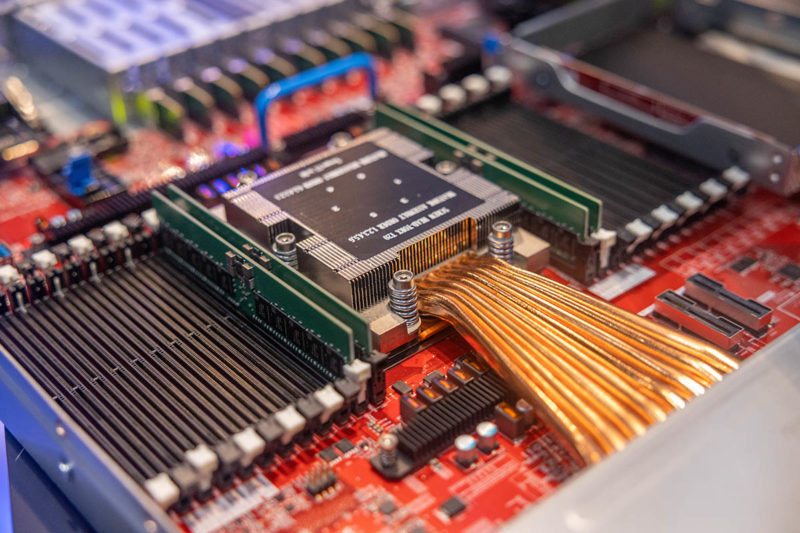
The Dynatron J12 cooler itself is a 3U tower cooler.
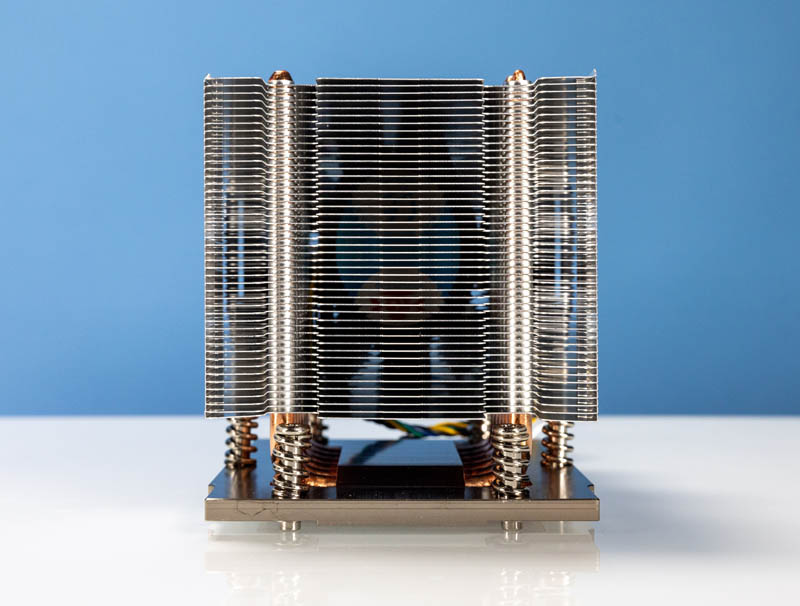
It is also an active cooler, meaning that the J12 has a fan.
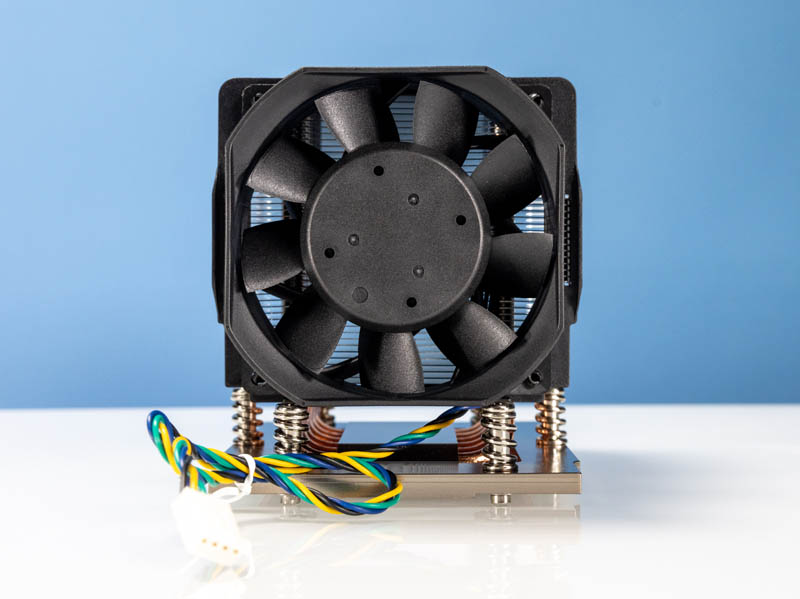
The fan is a 4-pin PWM unit.
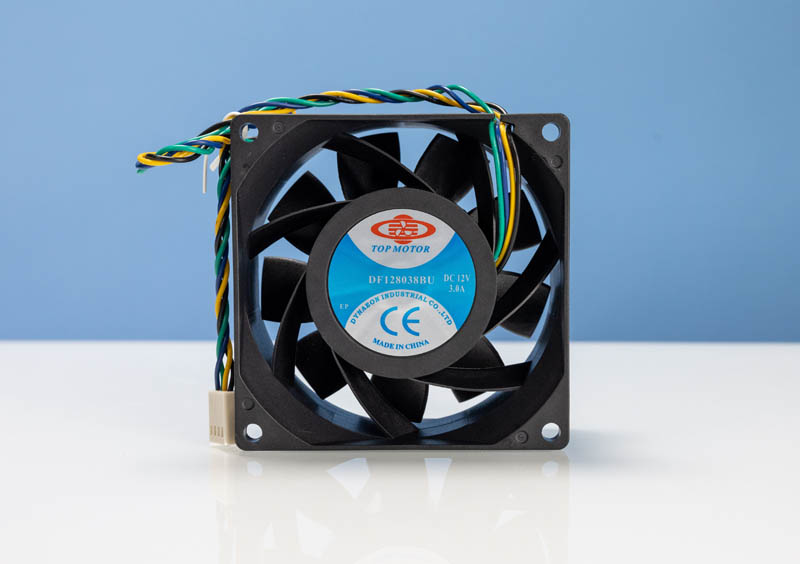
Here are the specs for the fan:
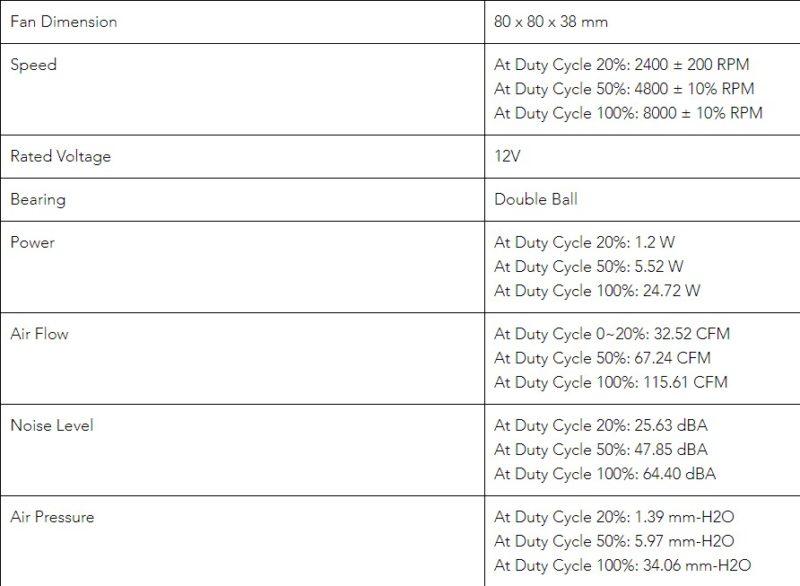
The fan is held into place by a bracket. This bracket on our unit had its mounting posts destroyed due to the way that the Dynatron J12 was packaged. To be more precise, both of the J12’s we have suffered similar damage. This seems to be because of how Dynatron’s packaging of the fan and heatsink are designed and how weak the mounting posts are.
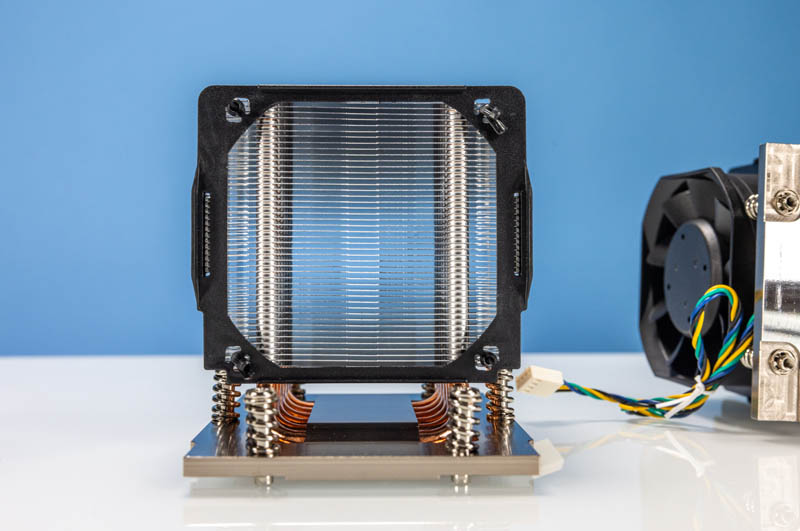
Between the copper block below and the tower cooler/ fan above, there are many heat pipes. One can see six copper pipes extend on either side of the cooler. For some sense, the previous generation Dynatron A35/ A39 had four heat pipes on either side.
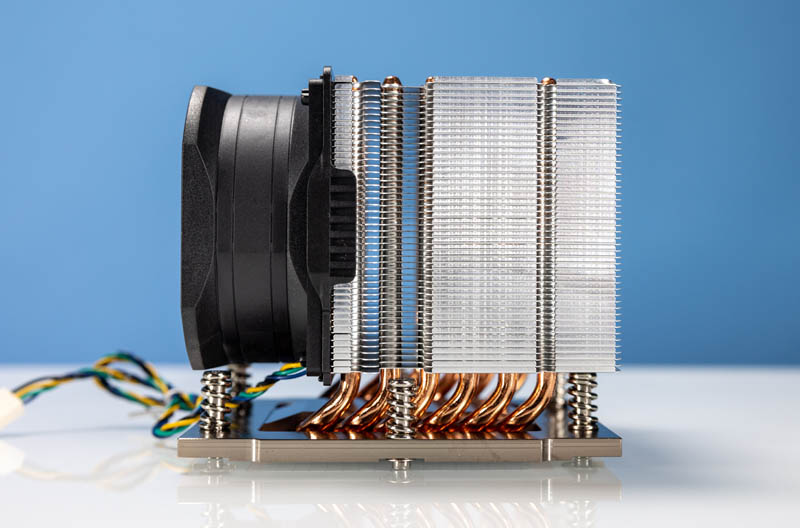
The new heatsink/ fan units are just under 800g to be able to cool up to 320W CPUs in 3U. Another point of generation-on-generation advances is that the A35/ A39 are only 600G to cool up to 280W TDP CPUs.
Final Words
Air cooling the next generation of CPUs is going to be challenging. We have both the Dynatron L31 and L32 liquid coolers for Sapphire Rapids and Genoa. Just for some sense of how much hotter things are getting, the Sapphire Rapids L31 is designed for up to 350W, and the Genoa L32 is designed for 320W. This Dynatron J12 certainly shows just how much bigger next-generation air cooling will need to be to cool server CPUs. Also, the larger AMD Socket SP5 socket footprint that matches the J12 will make it interesting for server designers. On one hand, it increases the area to put a cooler atop the chip. On the other hand, it also increases the footprint on a motherboard substantially.
At STH, we have been using Dynatron heatsinks for years. For example, here is a 2012-2014 photo with the ASUS KGPE-D16 dual AMD G34 motherboard with the all-copper Dynatron A1 passive heatsinks installed.
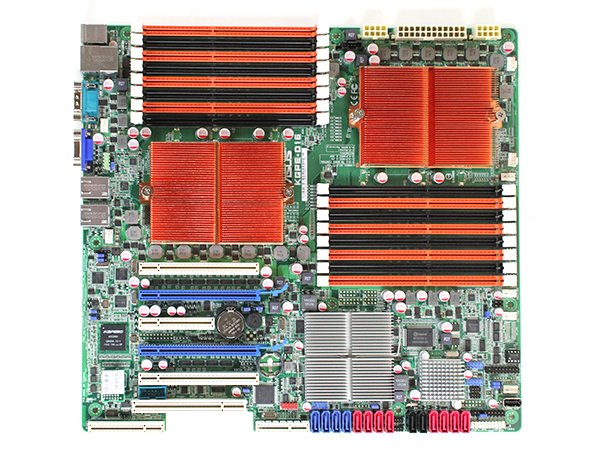
On the Dynatron J12 and J10 coolers we have, we saw enough quality challenges that it would make us hesitant to recommend them. For the J12, it just seems like Dynatron needs to re-design its packaging for coolers that weigh 50% more than the previous generation because having two units break in the same manner when the outer product box was undamaged seems like it is due to a packaging design defect. Just to take the photos here, we had to bend posts back into place the best we could. Until this is fixed, we cannot recommend purchasing the J12.

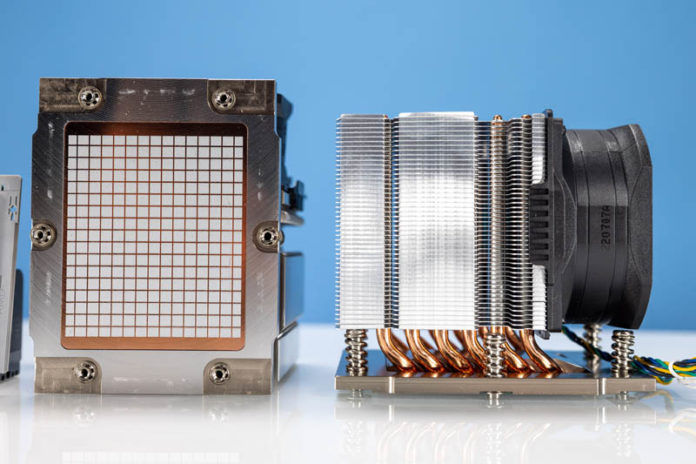



Related to your water-cooling videos, it seems that 1U & 2U systems will require water-cooling environments; if not now but in the very near future.
My datacenter days ended with testing Milans 1st half 2021…I saw some in racks during my August 2022 visit to my old DC.
A favorite format (at least up thru Rome (when we stopped being a 100% Xeon shop)) for years was 2U/4node dual-socket servers (air cooled then immersion cooled)…I can’t see the above implied mega socket working in that format (physically and possibly cooling wise.)
…CPUs have grown a lot more pins than in my college days (where I once worked with an Intel 8008 (18 pins iirc)).